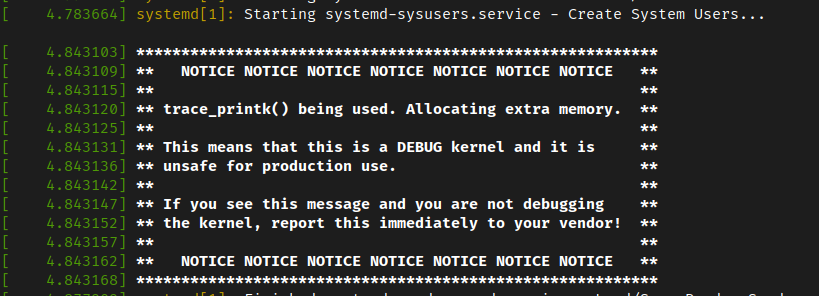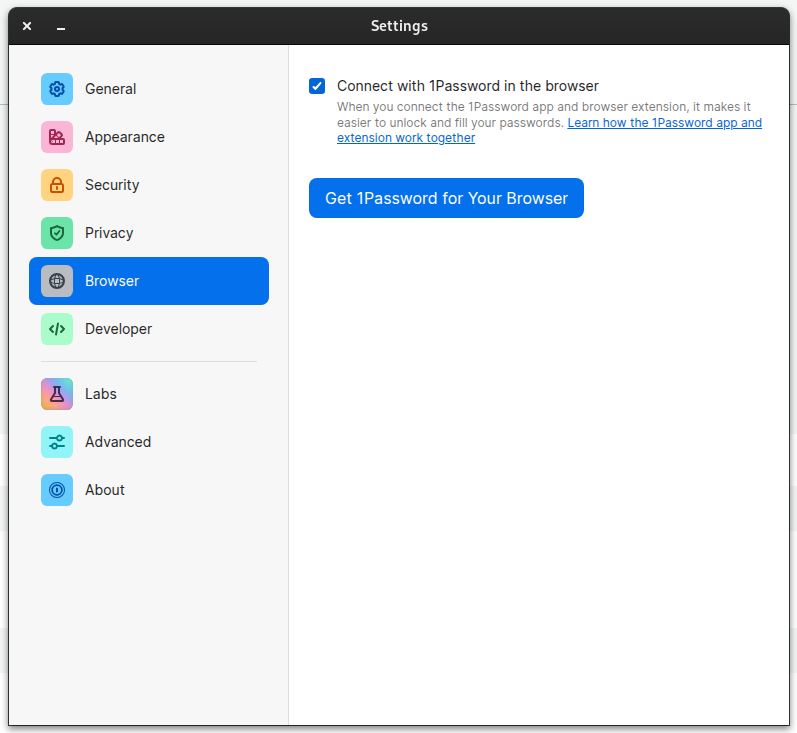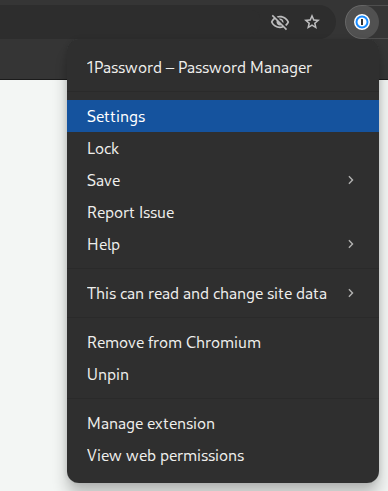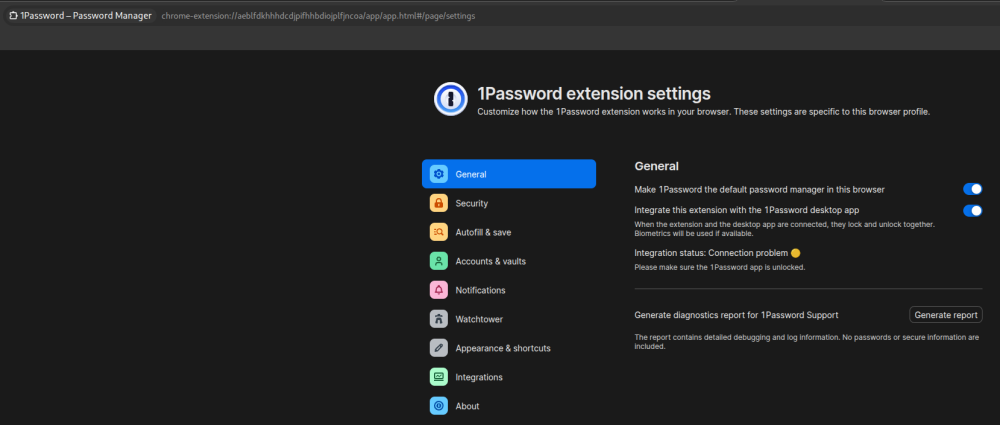All Activity
- Past hour
-
Hi, sorry I was away for a while. https://docs.armbian.com/User-Guide_FAQ/#why-things-stop-working Armbian basically takes the current kernel and applies patches and configs. You can start yourself with the framework and build the image for your board. https://docs.armbian.com/Developer-Guide_Build-Preparation/ You can inspect the patches applied for your board. Can you do some more tests? Can you confirm that the edid_asus_vs228.bin is in the /lib/firmware/edid directory? Also, can you boot without forcing a resolution, but forcing the edid: extraargs=drm_kms_helper.edid_firmware=HDMI-A-1:edid/edid_asus_vs228.bin drm.debug=0x4 Reason for this is that I hope the re-packaged edid (edid_asus_vs228.bin) does not have the checksum error, and maybe it works.
- Today
-
Thank you for the explanation
-
couldnt get it working with platform x11 and forcing it to build without internal ffmpeg stills defaults do software rendering with internal player, you can use mpv as external player it works but ina lot of cases you get a blue screen or a video filled with artifacts then it crashes... i'm compiling it with only gbm and forced external ffmpeg to test to use kodi with mpv create a file ~/.kodi/userdata/playercorefactory.xml then make it immutable because kodi for some reason keeps deleting it "sudo chattr +i ~/.kodi/userdata/playercorefactory.xml" to edit or delete run the same command with -i
-
I've run into similar problems and checking the bash history, what i used was sudo apt-get install build-essential meson ninja-build pkg-config git cmake gettext python3-mako python3-pip bison flex zlib1g-dev libelf-dev libunwind-dev libglvnd-dev llvm-18-dev libclang-18-dev libllvmspirvlib-18-dev libdrm-dev libva-dev libvdpau-dev libvulkan-dev vulkan-tools vulkan-validationlayers-dev spirv-tools libx11-dev libxext-dev libxdamage-dev libxfixes-dev libxrandr-dev libxshmfence-dev libxxf86vm-dev libxkbcommon-dev for what i've saw it seems axtracker is only needed with -Dgallium-xvmc=enabled so try to explicitly disable this if youre not declaring.. and try to keep the build options simple as in it is worth the hassle, performance increase within latest mesa releases is noticeable another tip is to create a alias to mpv in basrc (and launch gl applications with the same envs) alias mpv='vblank_mode=3 MESA_GLTHREAD=1 PAN_MESA_DEBUG=gofaster nice -n -20 mpv' it is actually faster, but don't set those mesa variables globally as it crashes xfce a lot
-
Hi, there are some pending changes to uefi config, not sure if they would affect you: https://github.com/armbian/build/pull/8377
-
hi, tried again with Lyra to setup virtualbox, it required legacy kernel ... linux-image-legacy-x86=24.11.1 → Kernel 6.1.119 on uefi probably not so critical, hdmi audio still works, okay here is chat where we solved it up to qt gui and extensions, will test my VMs now https://chatgpt.com/share/68846e9e-3768-8000-b2f4-e7bb5d6ddc9a excuse me for clutter here, initially, even apt-get didnt found virtualbox, but I had not updated things probably, its interesting that on theirs web the DEB packages somehow wont install by any gui installer, so I expected it will be harder
-
I assume it is some debugging left-over. Dealing with sbc families and sunxi in particular it is a ongoing fight against regressions and having a debug kernel can help to identify such. It is not ideal having this on end-user sbcs enabled but to limit resources we cannot afford having two current branches with and without debugging. If this is an issue for you, you can always use the build framework to build your own kernel package with adjusted kernel config disabling traces.
-
Hi I have use v25.8 rolling for Orange Pi Zero3 running Armbian Linux 6.12.35-current-sunxi64 and after run command dmesg I see information on screen So what can I do about it?
-
Greetings. @Michal Fita - tell me please, did you manage to port csi2 drivers to the mainline kernel? I am also very interested in the camera operation on RK3566.
- Yesterday
-
H313/H616/H618 are pretty much the same SOC. It’s the AXP power management IC that’s different. Also RAM and WIFi chips are usually different. https://linux-sunxi.org/AXP_PMICs
-
Alright, I built the x96q-lpddr3 image using the patches suggested. It booted (partially). Nothing on the screen, but it is starting! I chose that image because it is H313 and lpddr3 (the android uboot build that worked before detected it as such) I attached the serial log. It's getting late here and I may not get much more done on this until Monday, but this is a good sign in my opinion. uboot.txt
-
Hi, I successfully startet Armbian (Armbian-unofficial_25.08.0-trunk_Orion-o6_noble_edge_6.16.0-rc3_gnome_desktop.img) on the O6. Then I startet the installer to install it on the internal m2. The m2 is properly recognized by the BIOS and also by the installer. Also the installer reports a successful installation on it. Unfortunately when I try to boot the system, "nothing" happens. I just get back to BIOS within a second without any error message, really strange. What can I do here? Thanks and regards Hyper
-
Just installed Armbian 25.5.1 Desktop in my new board: Orange Pi Zero 3 with 2GB RAM, using a 32GB MicroSD card. Installed desktop as I have HDMI output and wanted to check that everything was going fine, and it did. I can connect to Armbian via SSH I could set up Pi-hole correctly. (that's why I get the board for) As My modem/router cannot manually set the DNS to the IP of the orange pi, I just disabled it ans installed ISC-DHCP server and got it running. I used chatgpt for that purpose. I have some understaning using linux distros and networking, chatgpt just saved my some time with configuration. After some days I saw o nInternet that ISC was deprecated and the modern version is KEA-DCHP Server I tried to install It, just the IPv4 version as it is just for my home-use. But I couldnt get it working I'm stuck on this error: Unable to use interprocess sync lockfile (Permission denied): /var/run/kea/logger_lockfile Tried changing permissions, running manually the service, etc, I couldn't start the DHCP server so I'm coming back to ISC-DHCP server. I liked to web interface of KEA too, to monitor connected devices. But could get it working. Have anyone tested this server on Armbian?
-
Nice! I'll try that. Thank you for your help so far. Finding the right documentation has been a little tricky for me and I really appreciate the help.
-
Your tv stick probably has secure boot enabled. You can compile a secure boot image using these steps.
-
Hi friends, I have one nagging thorn in my side that I just cannot figure out. I need someone who has a 1password account for help with this one. The problem - their desktop app and browser plugin work in tandem -- and it will not synchronize on Armbian for some reason. I've tried everything I can think of - ensuring nothing is downloaded from Flatpak and therefore sandboxed and preventing any connectivity issues. But still not working. If someone can take 5 mins and create a free trial account on 1password, then here are the steps to reproduce: Download the latest arm64 version of 1password Desktop: curl -sSO https://downloads.1password.com/linux/tar/stable/aarch64/1password-latest.tar.gz Extract and move the files: sudo tar -xf 1password-latest.tar.gz sudo mkdir -p /opt/1Password sudo mv 1password-*/* /opt/1Password Run the post-installation script, and launch 1password sudo /opt/1Password/after-install.sh 1password Everything is all good, and working. I log in to my vault, as intended, and the app is fully unlocked. Settings already default to synchronization being enabled, but just for the sake of double checking: So we are all set on the desktop side. Now, for the browsers. I have checked this with both Firefox, and Chromium extensively -- all various kinds of versions, ensuring no Flatpak or anything like that. We install the browser plugin: https://1password.com/downloads/browser-extension And click on your corresponding browser, and enable the extension/plugin. At this point -- and I have done this hundreds of times across all of my other devices and installations -- there SHOULD be nothing to do in the extension as far as entering a username and password goes. It's supposed to detect the local socket and interface with the desktop application, meaning once you are authenticated on the Desktop app, your browser plugin will unlock. The most you'd have to do is click through the 1st-time-launch welcome message and skip the tutorial, but NOT authenticating needed. And sadly, this is where obviously, it doesn't work. We are instead prompted for our username and password and the extension shows a lock symbol which is totally incorrect. We right click the extension in Chrome and pick Settings, to figure out what the heck is going on: And are met, with the dreaded, connection problem and yellow light. Instead of all systems go and the GREEN light, as it is supposed to be: I've pretty much exhausted the amount of testing I can possibly do, I'm just a novice user personally Any help would be greatly appreciated, I'd even make a donation if someone can crack this nut, as it's a pretty glaring (for me) missing feature that I've grown accustomed to across every other device I own, and it does typically work very well, on any other OS.. I run it on Linux Mint, PopOS, Debian, Windows, all kinds of stuff never a problem I am able to report back with any further information requests or diagnostics etc. and already plan to forward this link to 1password support as well Thanks in advance for any help!
-
Thank you for your suggestions. I am trying to build Mesa in my Orange Pi Zero 3. When I tried installing the build dependencies, apt could not find libxatracker-dev, libllvm-18-dev, libspirv-tools-dev i added changed "deb-src" in the /etc/apt/debian.list, so I could download *-dev packages. How did you install all the dependencies? Are you in Bookworm, or Trixie? Actually I am looking for a double benefit with a new Mesa (bookworm provides mesa 22.3.6, trixie provides 25.0.7): *H264 hardware acceleration *I know that Raspberry has a newer Mesa (don't have it at hand), and X11 can handle the same LCD, with the same kernel module panel-mipi-dbi.ko
-
Thanks!, it works nicely, i was using a minimal image and had to install xfce then edit the media-buster-legacy-rk3328 deb to not ask for armbian-buster-desktop, i also needed mpv-legacy and got it from a github link so far everything is working good, 4K hevc in kodi is fine but for some reason chromium in chrome://gpu says that video decoding isnt accelerated, only webgl stuff
-
Doing a little digging, From https://patchwork.ozlabs.org/project/uboot/patch/20210822044649.13585-3-samuel@sholland.org/ "Most Allwinner sunxi SoCs have separate boot ROMs in non-secure and secure mode. The "non-secure" or "normal" boot ROM (NBROM) uses the existing sunxi_egon image type. The secure boot ROM (SBROM) uses a completely different image type, known as TOC0." I am not an expert, but I feel that is likely the issue here. Since the X96 s400 will launch the bootrom, it should only require a bootrom change. from https://linux-sunxi.org/TOC0#U-Boot.27s_mkimage It should only need a RSA key generated, as the X96 S400 will launch the sboot, thus no Vendor e-fuse should be set.
-
The X96_S400_20220610-1210 will error out with: sunxi sprite: toc magic is error need secure image This was from an attempted flash with Phoenixsuite
-
Oops, I screwed up which Android image works. The X96 image, not x96q will launch uboot during the Phoenixsuit flash, but will not fully complete and will complain it needs secure or something, I'll get logs, the Transpeed atv image will flash and will get stuck not getting past sboot. The images in question: X96_S400_20220610-1210 h313_20230921_atv_Transpeed_2_16_orig I can upload them if it will help.
-
So, unfortunately all the images that I have tried get stuck in fel mode. I do know the G96 needs secure mode according to debug logs when I was using Phoenixsuit before and is signed in test keys if that helps. The h313_20230921_atv_Transpeed_2_16_orig android image will launch into uboot (I can get into uboot shell via serial) and flash in Phoenixsuit, but will get stuck in sboot upon rebooting and unable to get any farther, so no uboot shell. Armbian-unofficial_25.05.0-trunk_Tanix-tx6s-axp313_bookworm_edge_6.12.11 stuck at fel Armbian-unofficial_25.05.0-trunk_X98h_bookworm_edge_6.12.11_server stuck at fel Armbian-unofficial_25.05.0-trunk_Transpeed-8k618-t_bookworm_edge_6.12.11_server stuck at fel Armbian-unofficial_25.05.0-trunk_Vontar-h618_bookworm_edge_6.12.11_server stuck at fel Armbian-unofficial_25.05.0-trunk_X96q-lpddr3-v1-3_bookworm_edge_6.12.11_server also stuck at fel
-
hi all, pls, is possible to use armbian ueafi-x86 as host for virtualbox? I expect the ubuntu version?? how to install this from cli? recently it seems something was broken on my win11 (after reinstall of new bag of things) or with virtualbox 7.1xx; these were things that worked for years, even with hyper-v on (wsl2), but now, I am writing from armbian, testing old intel nuc10 system booted from sdcard/usb3 (preparing to test new amd machine too) ... virtualbox is quite crucial for some my yold dev things which I can run only in Win2K or Win7; btw, ms copilot was recently quite nice and understanding very tired guy ... https://copilot.microsoft.com/shares/7NhhL6e4MYhkvJC8Grmih Petr
-
hi, not sure for the sbc, but on uefi-x86, alsa has hdmi audio, but its not loaded for pulseaudio ... ?? here I managed to load it and unmute SPDIF in alsamixer (I still dont understand how devicetree powered SBCs differ against uefi-x86 system ... excuse me) crucial help from Lyra 🙂 ... unmuting SPDIF did the thing, probably also loading the sink also, ufff https://chatgpt.com/share/68836e5f-9e4c-8000-8874-46ea35a07331












